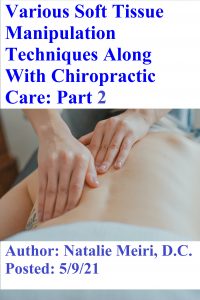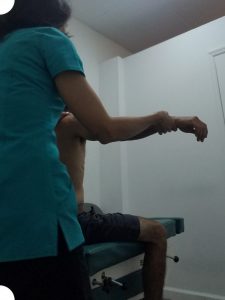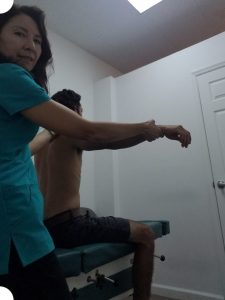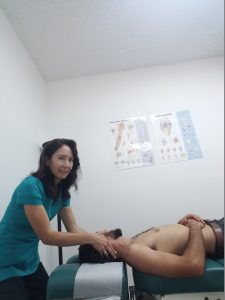
This is a follow up to the post Various Soft Tissue Manipulation Versus Massage Along With Chiropractic Care: part I. As a review, soft tissue manipulation (STM) techniques are defined as those physical methods applied to muscles, ligaments, tendons, fascia, and other connective tissues with the goal of therapeutically affecting the body. Generally, STM enhances proper tone and/or extensibility (ability of a muscle to be stretched) through a number of proposed mechanisms. Read below about the Various Soft Tissue Manipulation Techniques Along With Chiropractic Care: part 2 in our West Palm Beach office.
Functional Techniques
Functional techniques focus on structure and function and this interrelationship in the body. Additionally, they focus on the tendency of the body toward self-regulation. Functional techniques restore normal ease of movement and reduction of abnormal afferent (inward) input (signals) into your nervous system by correcting the problematic muscles. Certainly, this restores joint mobility and muscle tone. Two examples of functional techniques are MRT and PRT described below.
Myofascial Release Technique (MRT)
The goal of myofascial release treatment (MRT) is to establish functional three-dimensional whole-body symmetry and motion by removing fascial (thin casing of connective tissue that surrounds bone, nerve fiber and muscle) restrictions and restoring the body’s equilibrium. Consequently, MRT reduces muscle spasm and fascial restrictions. This eliminates irritation to these pain-sensitive structures and so increases range of motion.
Positional Release Therapy (PRT)
PRTs major characteristics include specific body positioning and the use of tender points (areas of pain). PRT works by the positional release of abnormal neural reflexive activities (a neural reflex is an involuntary response to a stimulus). This is accomplished by placing the involved soft tissues in an “ideal position of comfort“. Irritability of the tender points are reduced as PRT normalizes function. In short, a return to normal length of the muscle is ultimately achieved.
Manual Resistance Techniques
Muscle Energy Technique (MET)
MET incorporates the use of the patient’s muscular effort in the application of the procedure. The primary effect of MET is to influence joint function. But, there will be effects on the muscles. Similarly, the aim of MET is to restore normal joint position and function while influencing proper posture. And to be effective, the soft tissue restrictive barrier must be found, accurately engaged and manipulated. Moreover, engaging the restrictive barrier is what distinguishes soft tissue manipulation (STM) from massage.
Postisometric Relaxation (PIR)
Postisometric relaxation (PIR) achieves results through neurologic mediation of neural pathways (nervous system pathways). PIR techniques focuses on the muscular system and on inducing muscle lengthening. So it lengthens the muscle by influencing the nervous system. Firstly, PIR refers to the effect of subsequent relaxation experienced by the muscle after brief periods of isometric contraction. Isometric contraction occurs when muscle length remains relatively constant as tension is produced. Secondly, by relaxing the active elements within the muscle, the lengthening procedure may be more effective at stretching the connective tissue elements. Thirdly, this normalizes the function of the contractile and noncontractile elements in the muscle. Lastly, PIR tends to be simplistic and gentle. Above all, you can also carry out many useful types of self-administered PIR as home treatment between your visits.



Soft tissue manipulation techniques along with chiropractic adjustments has many benefits for your health!
Call your West Palm Beach Chiropractor at 561-253-8984 to find out more about Various Soft Tissue Manipulation Techniques Along With Chiropractic Care: Part 2 or to make an appointment.
Various Soft Tissue Manipulation Techniques Along With Chiropractic Care: Part 2 will be followed up with a post (part 3) on BODY WALL REFLEX TECHNIQUES (ischemic compression, acupressure, chapmans reflex points).
References:
Bergman, Thomas. Peterson, Lawrence. Chiropractic Technique Principles and Procedures
- Third Edition
Hammer, Warren. Functional Soft Tissue Examination and Treatment by Manual Methods.
Third Edition
Meiri Chiropractic
561-253-8984